While the quagmire may have technically ended some time ago, in many veterans' and war photographer’s hearts, the Vietnam War rages on.
During the Vietnam War , the United States military gave the press a noteworthy amount of exemption to go in fight zone . Photos from the front line come out in every newspaper ; footage of the conflict unfurl on televisions across the country .
photographer in a sense became soldiers as well , risking their lives to tell the fib of those riskingtheirlives abroad , amid anincreasingly unpopular war . They put to work to preserve the war for the history book , to ensure that the sacrifice of the soldiers did not go unseen .
Fifty eld subsequently , this catalogue of images provides a vivid , excruciating account of one of the most trying conflicts the U.S. has seen – and more broadly , cuts directly to the mettle of warfare , its stark horror and its striking banalities . It render viewers a deep discernment of what the soldiers and photographers live on through - and what many of them will never be capable to shake .
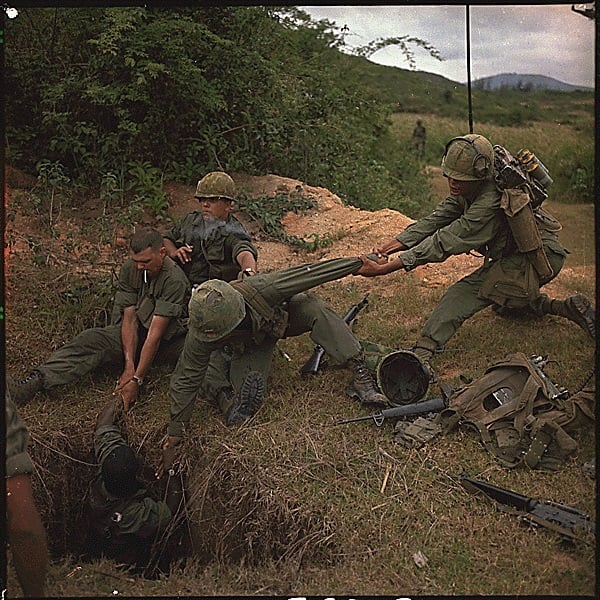
1967: Operation “Oregon,” a search and destroy mission conducted by infantry platoon of Troop B. Here an infantryman is lowered into a tunnel by members of the reconnaissance platoon.
Next , appear at the most knock-down photos and hold up myth fromWorld War II .
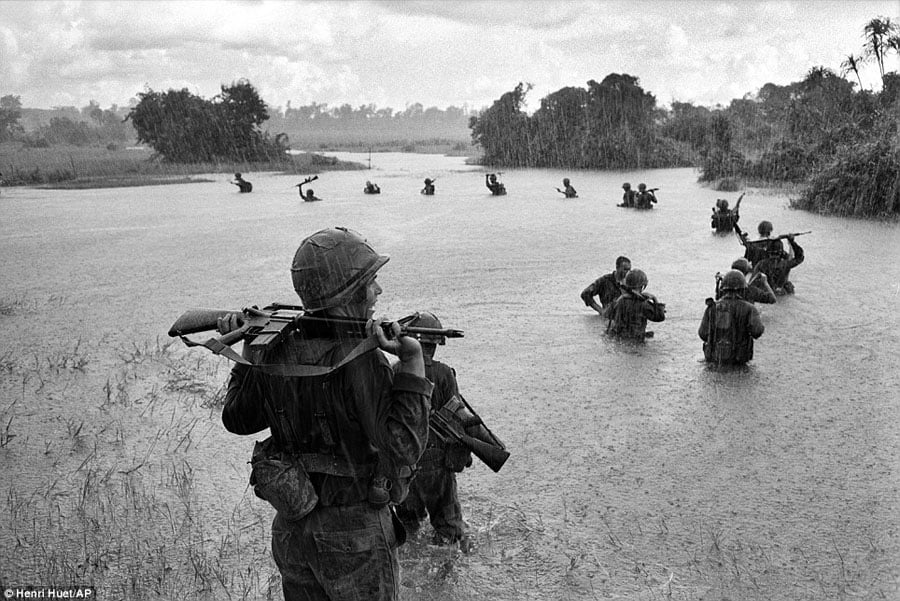
1965: In the jungle area of Ben Cat, U.S. paratroopers carry their weapons above water in the rain while they search for Viet Cong troops.Photographer Henri Huet would later die in 1971, when the helicopter that he and three other photojournalists were in was shot down.
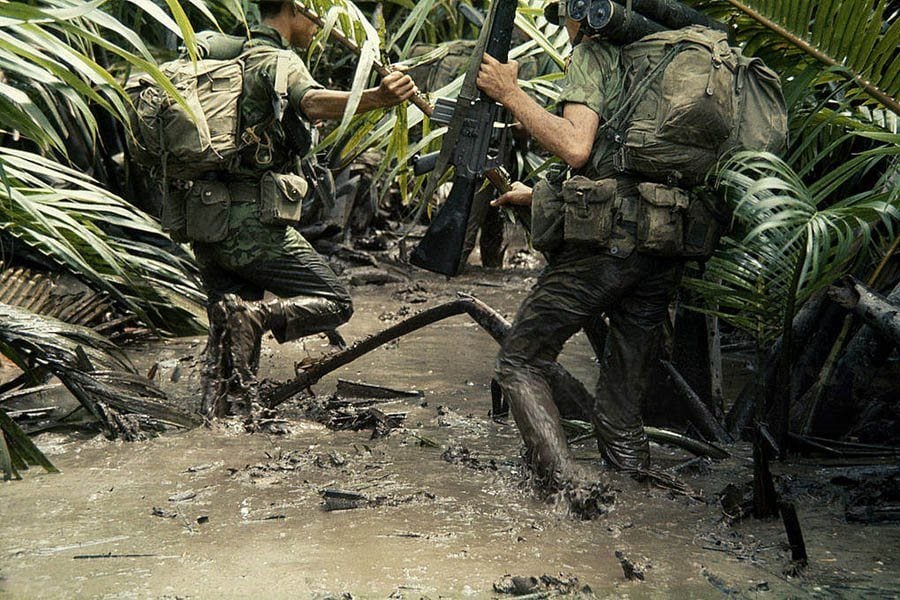
1968: Armed South Vietnamese marines slog through jungle mud, Mekong Delta, South Vietnam.
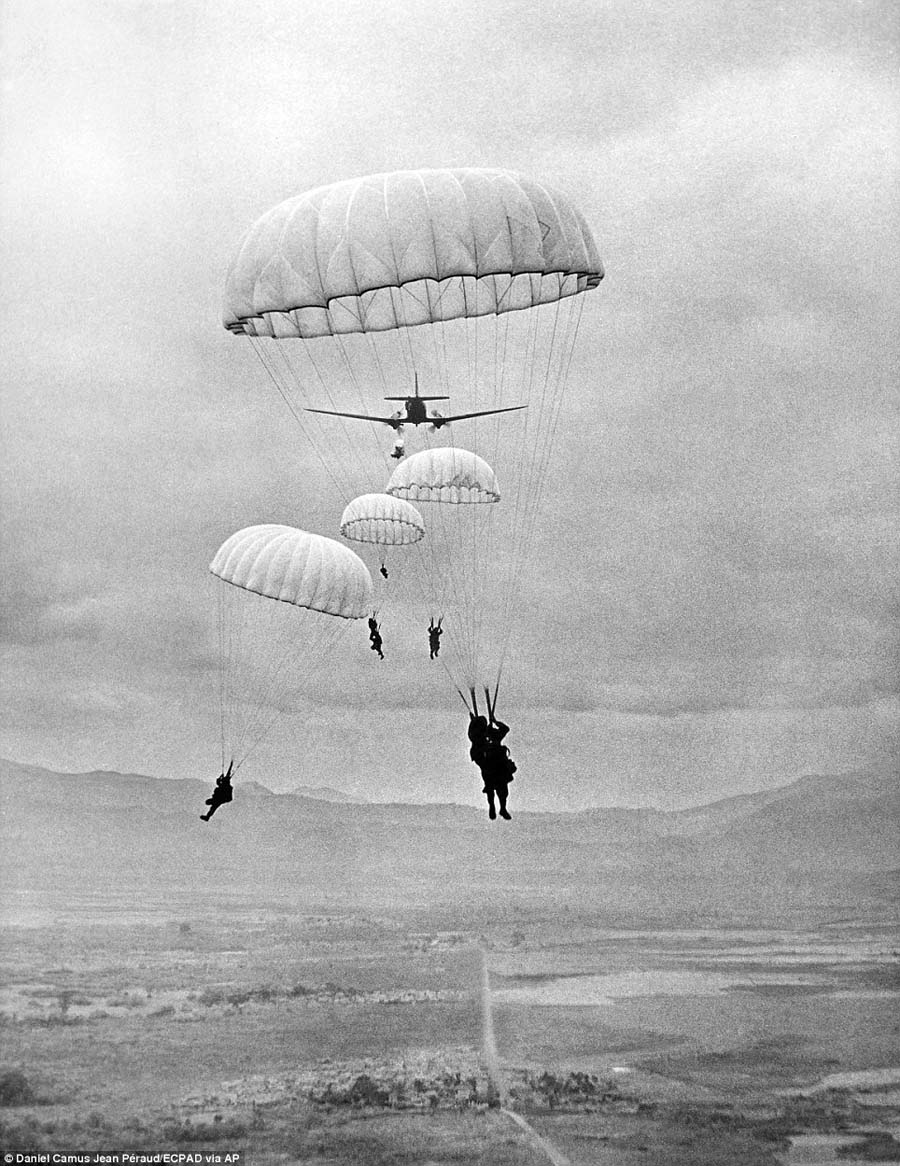
1954: French paratroopers descend on Dien Bien Phu to provide reinforcements.
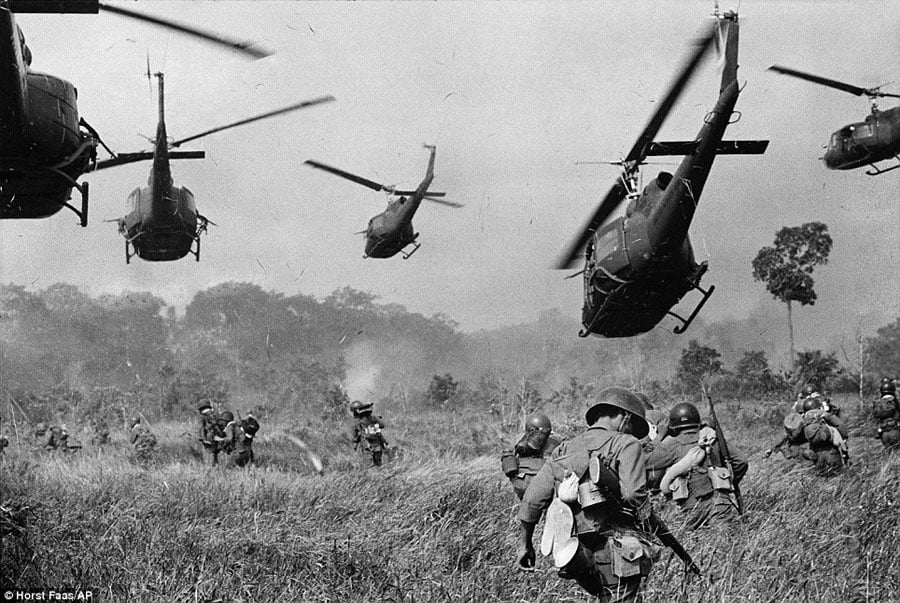
1965: U.S. Army helicopters lay down cover fire over South Vietnamese troops as they attack a Viet Cong camp north of Tay Ninh, near the Cambodian border.
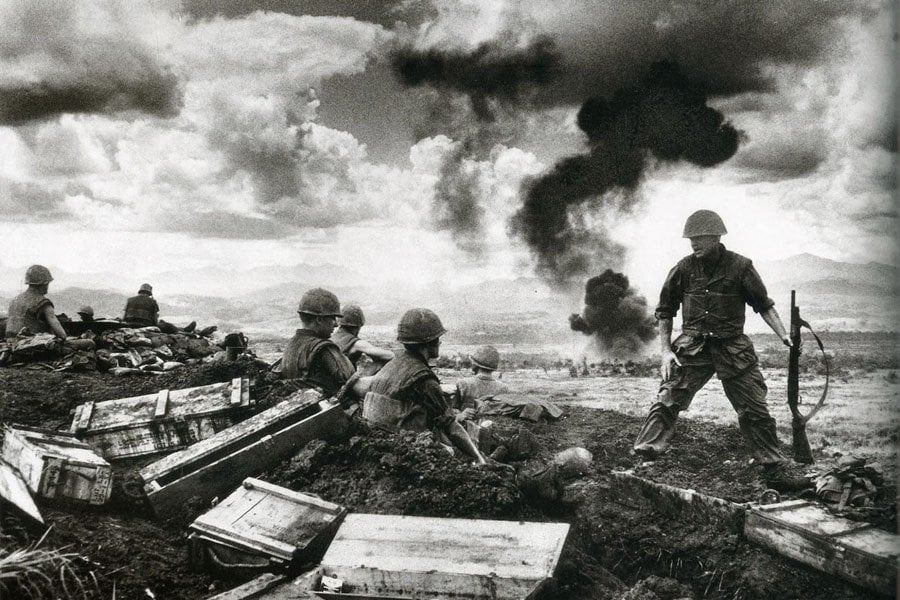
Combat at the Con Thien Base in 1968.

1966: U.S. Marines south of the DMZ (Demilitarized Zone) after a night of fighting North Vietnamese troops. The supply chopper seen in the picture was shot down.
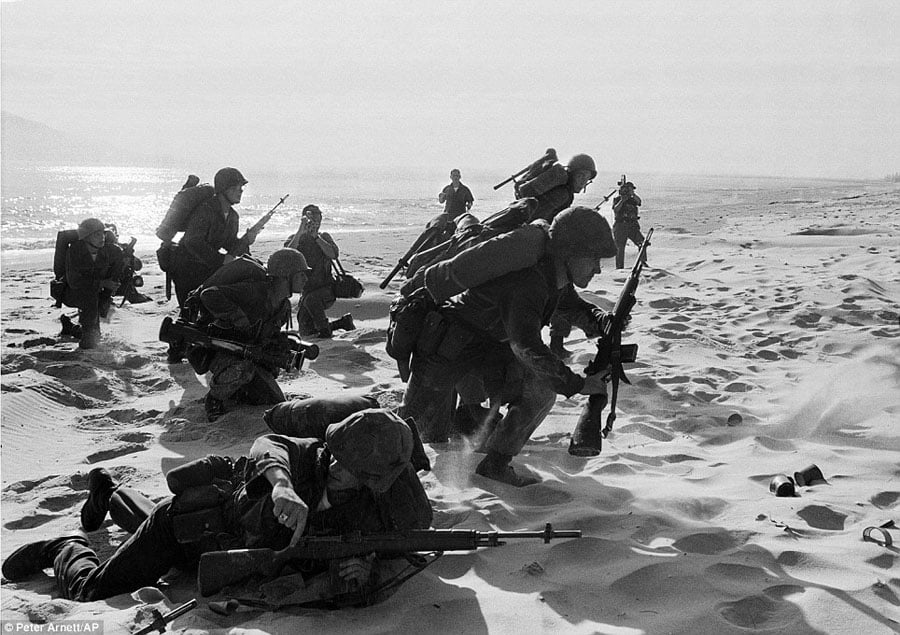
1965: American soldiers arriving at Red Beach at Da Nang.

Buddhist monk Thich Quang Duc burns himself to death on a Saigon street to protest persecution of Buddhists by the Catholic South Vietnamese government. This was the first in a series of self-immolation by the monks.
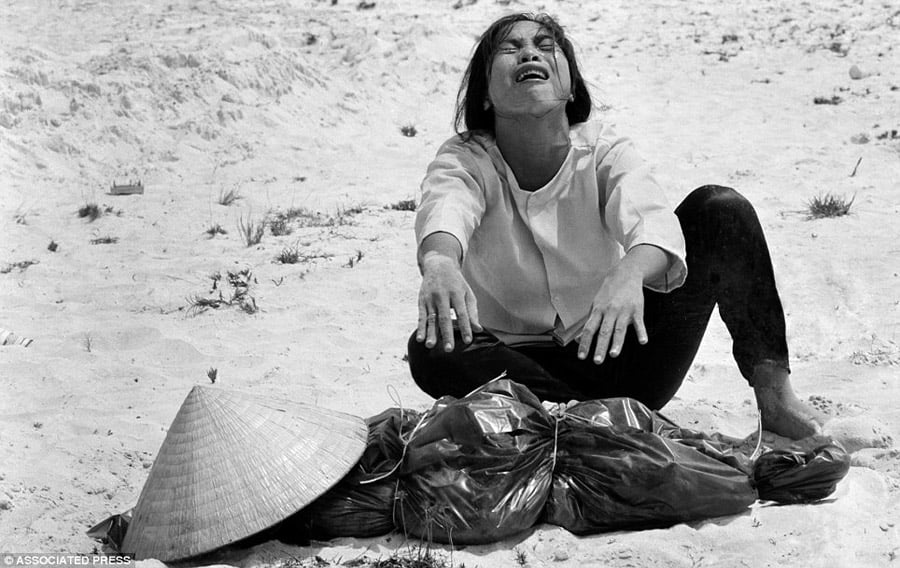
A South Vietnamese woman grieves the loss of her deceased husband, who was discovered in a mass grave.
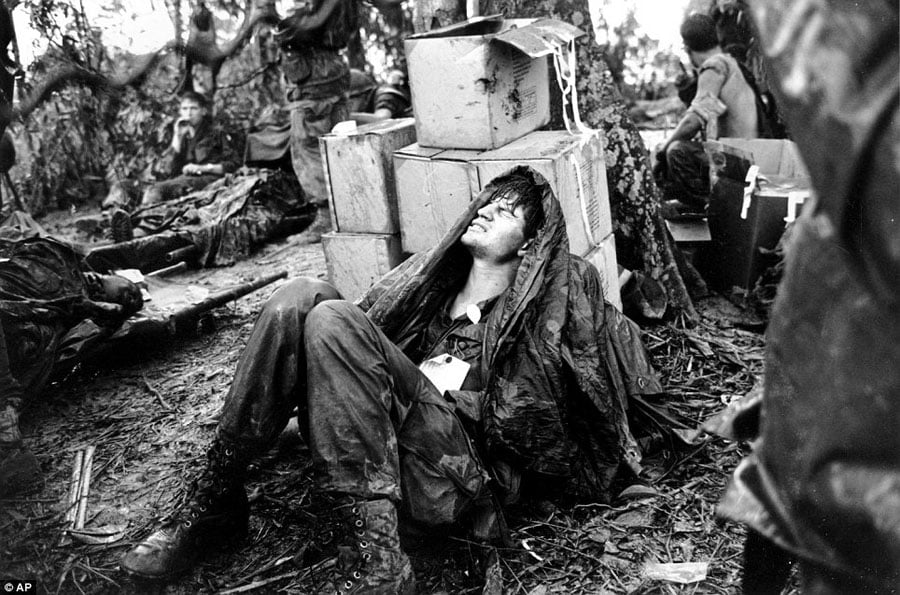
A wounded paratrooper in agonizing pain awaits medical evacuation at the base camp of Shau Valley.
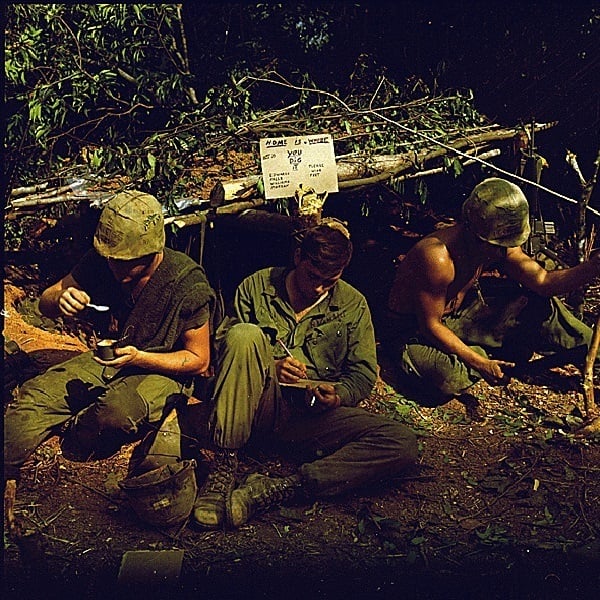
“Home is where you dig” was the sign over a fighting bunker, 1968.

1971: Near Camp Eagle, an aerial view of a peace symbol probably made by U.S. troops with a bulldozer.
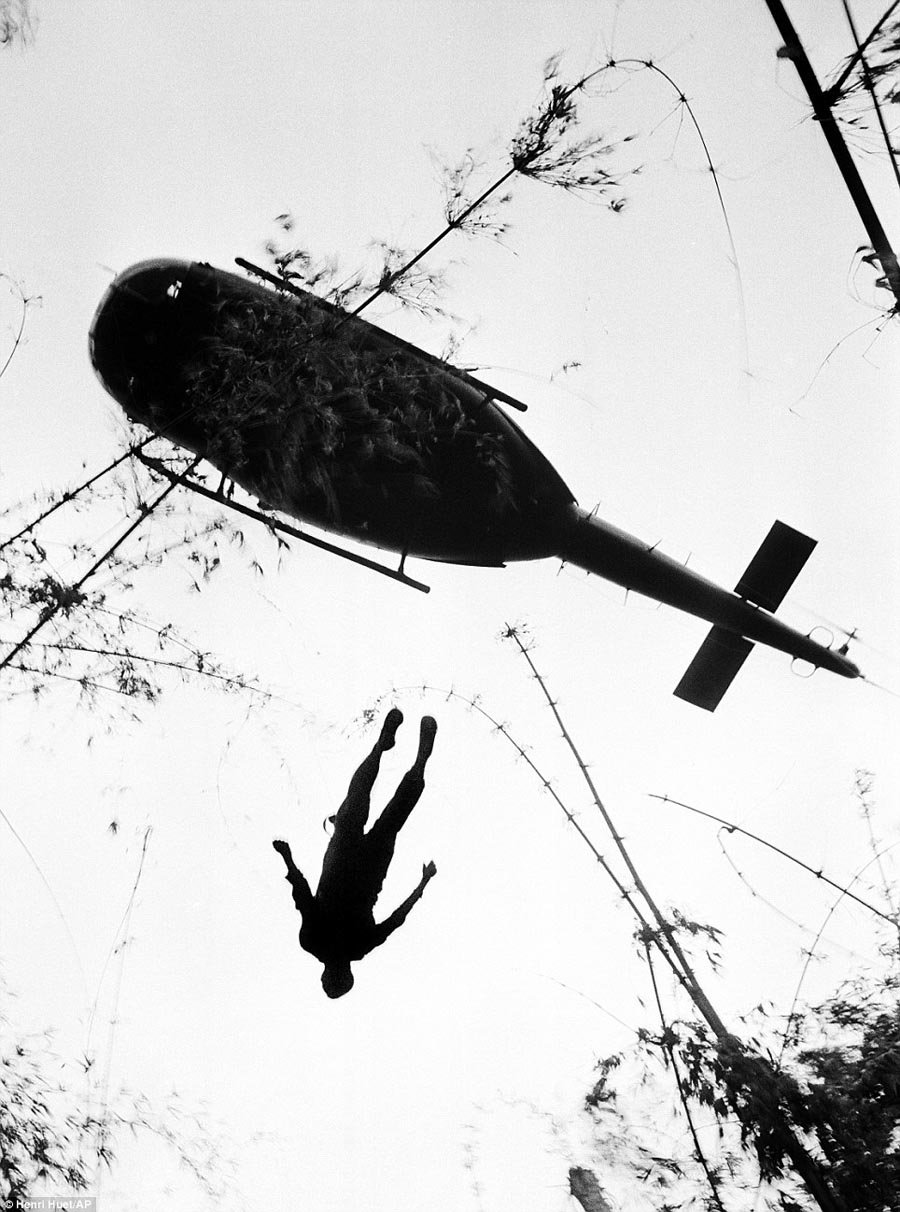
1966: The body of a U.S. soldier killed in battle near the Cambodian border is lifted up to an evacuation helicopter.
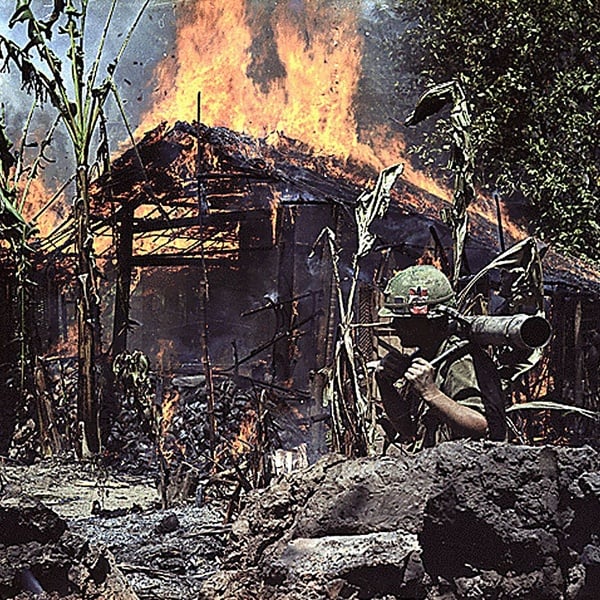
1968: Private First Class Raymond Rumpa, St. Paul, Minnesota, with a 45 pound 90mm recoiless rifle.
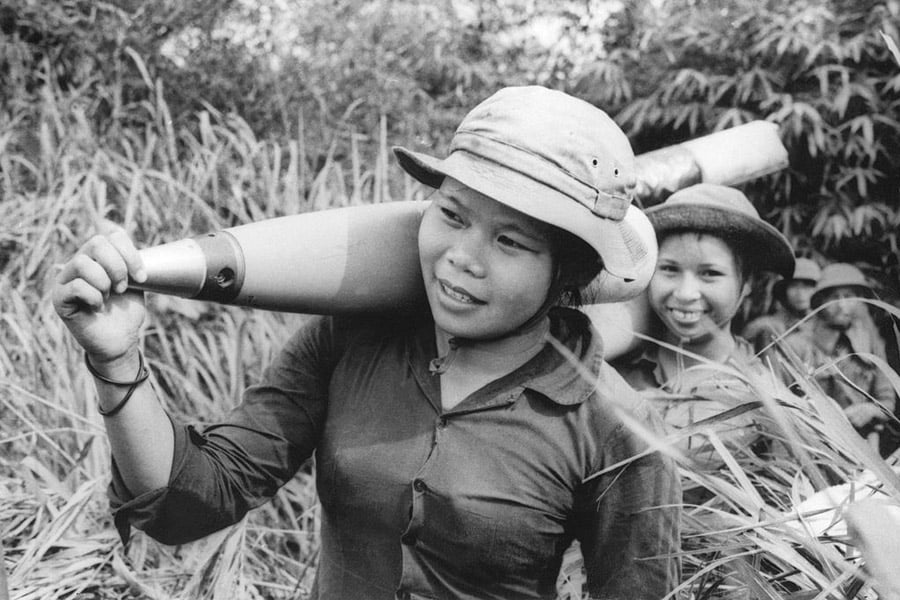
Picture released in 1972 by a North Vietnamese official agency with the caption: “Young women carry the ammunition to the front in Quang Tri province, south Vietnam."
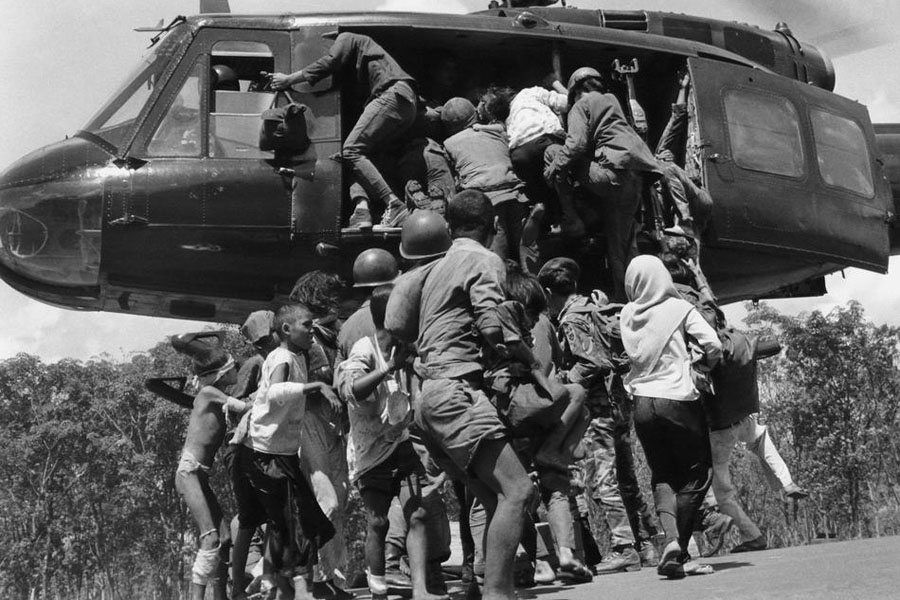
1972: Lightly-wounded civilians and troops attempt to push their way aboard a South Vietnamese evacuation helicopter.
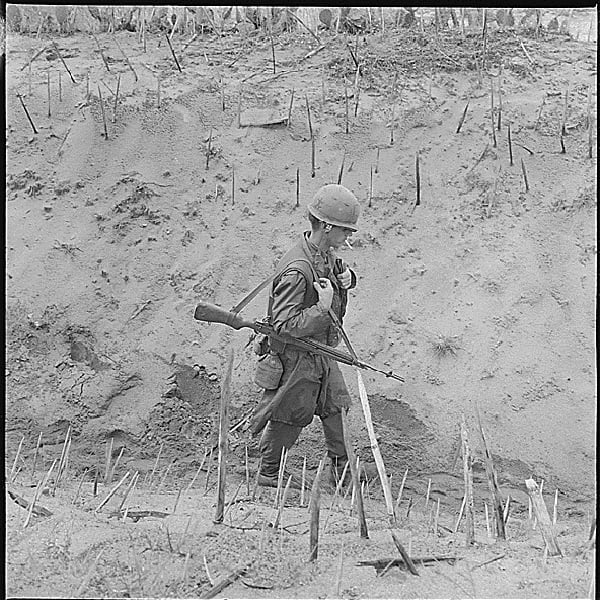
Marines of Company H walk through a punji-staked gully in 1966.
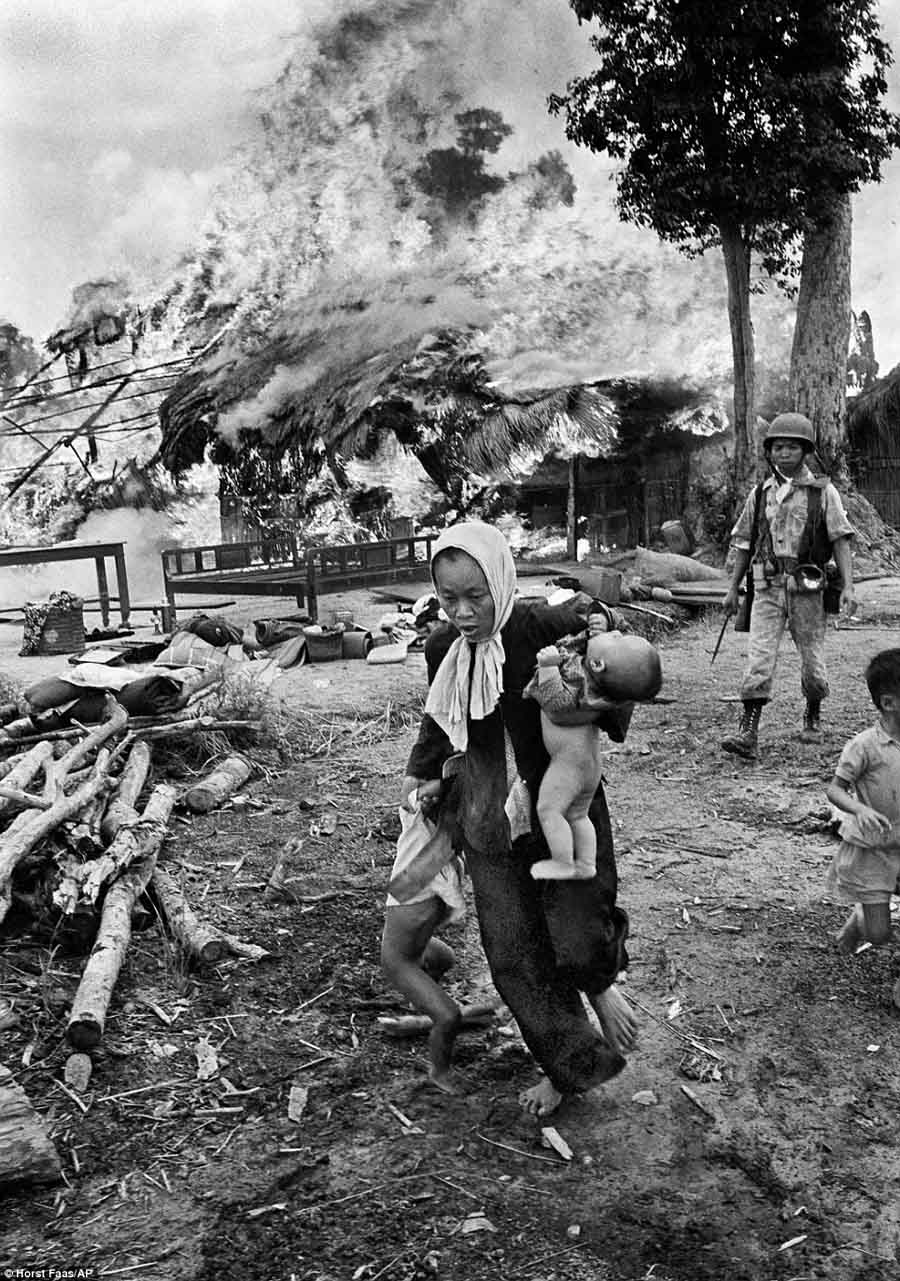
1963: A Vietnamese mother pulls her two children away from their burning home which was set fire to by South Vietnamese soldiers, near Tay Ninh.
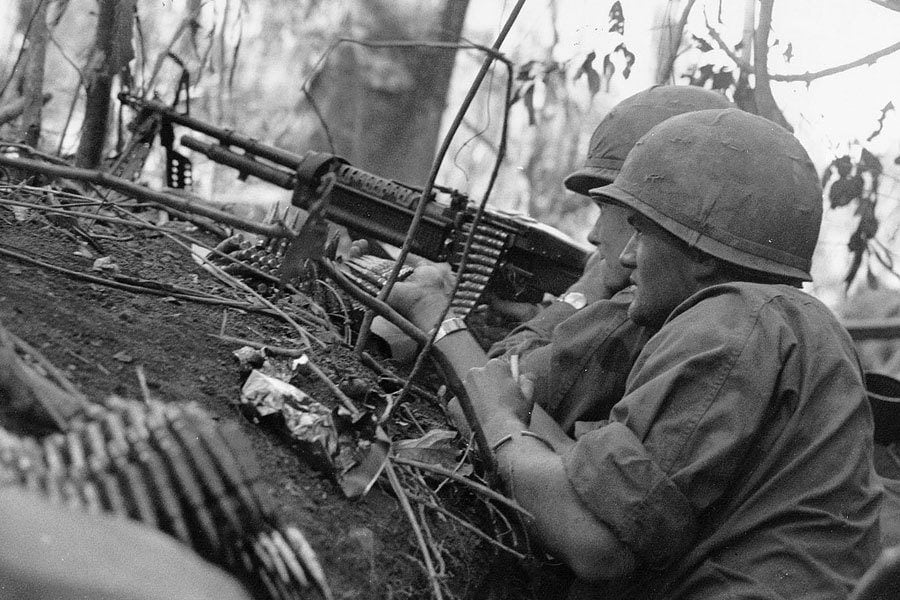
American soldiers taking cover.

1967: Soldier resting close on his position at the Hill 875 near Dakto, a few days after the North Vietnamese Army made a massive assault.

Soldiers taking rest close to a small Christmas tree on their position at the Hill 875 near Dakto, few days after the North Vietnamese Army made a massive assault.

1965: American wounded soldiers of the special forces are evacuated by helicopter from a camp in Plei Me, south Vietnam.

1967: Close up of a U.S. soldier in Vietnam.

1971: American helicopters land at Khe Sanh base on the Laos border after it was “reactivated” following a Vitecong offensive.

1968: Marines load captured material into canoes in a jungle-covered delta on the Cai Lon River.
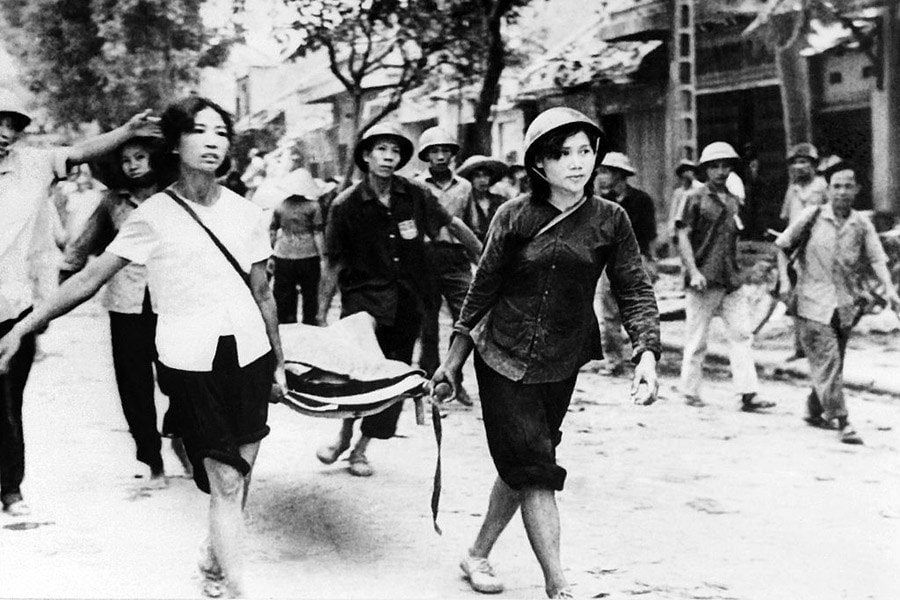
Picture released in 1972 of Vietnamese people carrying victims of the American “Christmas bombings” on Hanoi and North Vietnam.
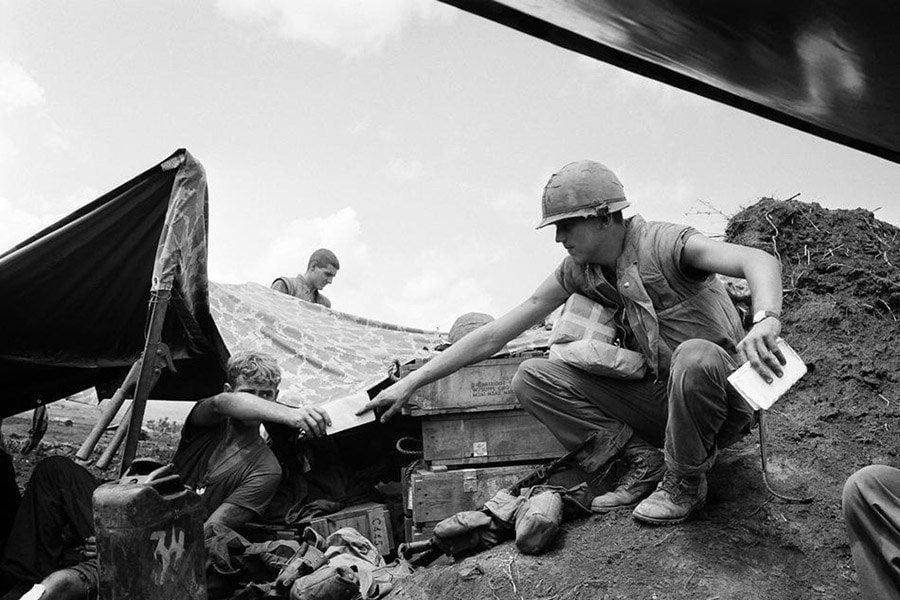
1967: CPL. Jesse D. Hittson of Levelland, Texas, reaches for his mail at the U.S. Marine Con Thien outpost two miles south of the demilitarized zone in South Vietnam.
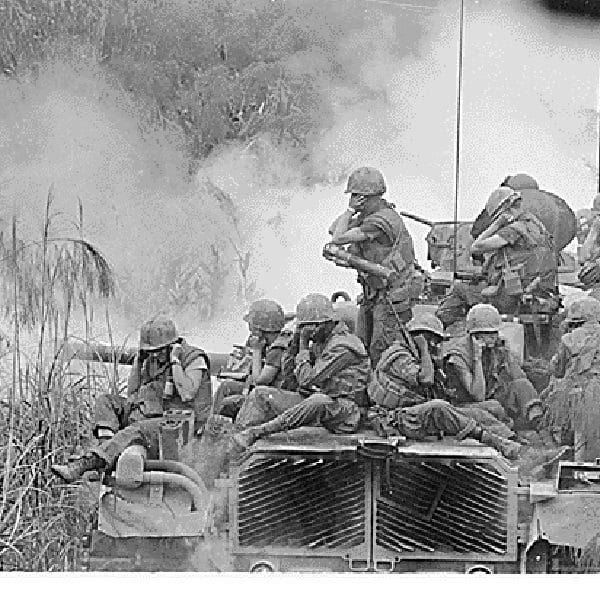
1968: Marines riding atop an M-48 tank, covering their ears.
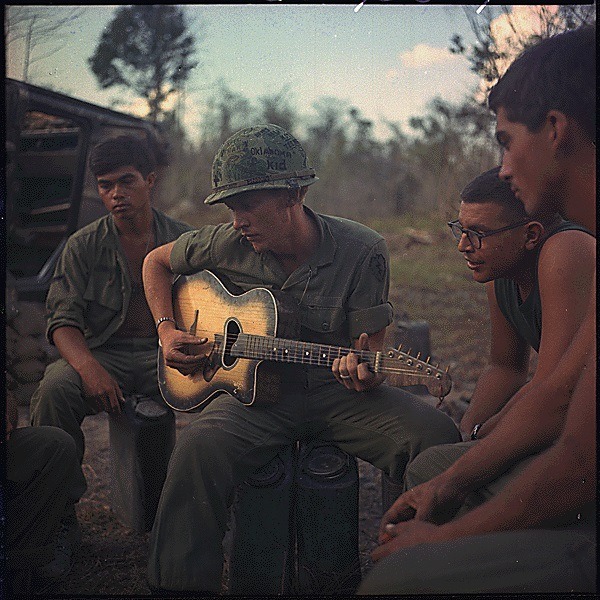
1968: During “Operation Yellowstone” at the end of a hard day, a few members of Company A gather around a guitar and play a few songs.
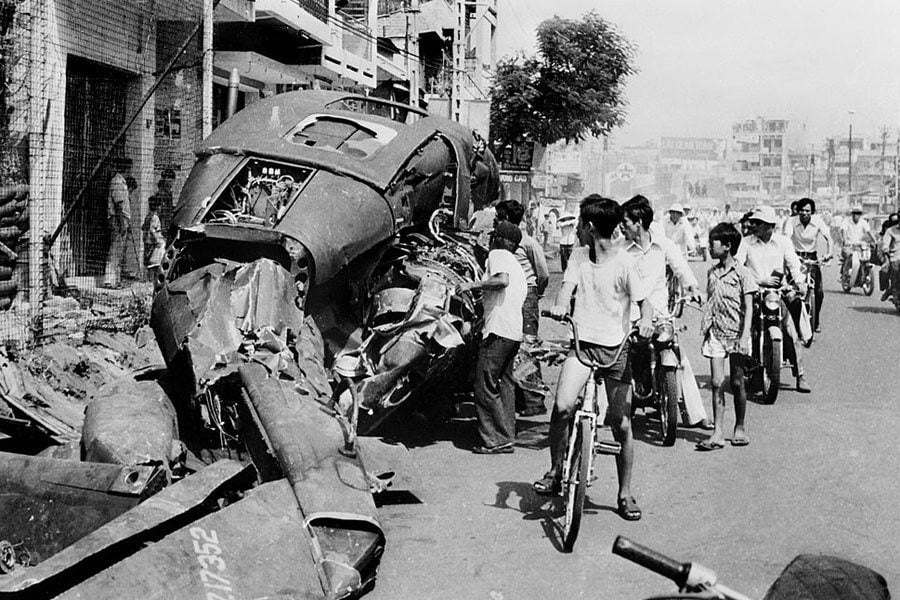
1975: Inhabitants look at a US helicopter which was destroyed the day before the takeover of Saigon – during the refugee evacuation.
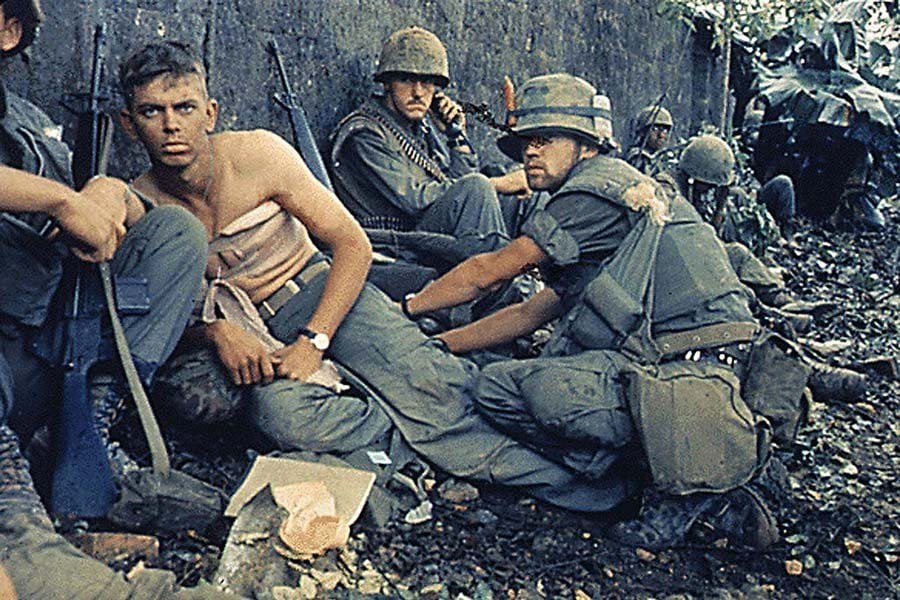
1968: D.R. Howe treats the wounds of Private First Class D.A. Crum, “H” Company, 2nd Battalion, Fifth Marine Regiment, During Operation Hue City in Vietnam.
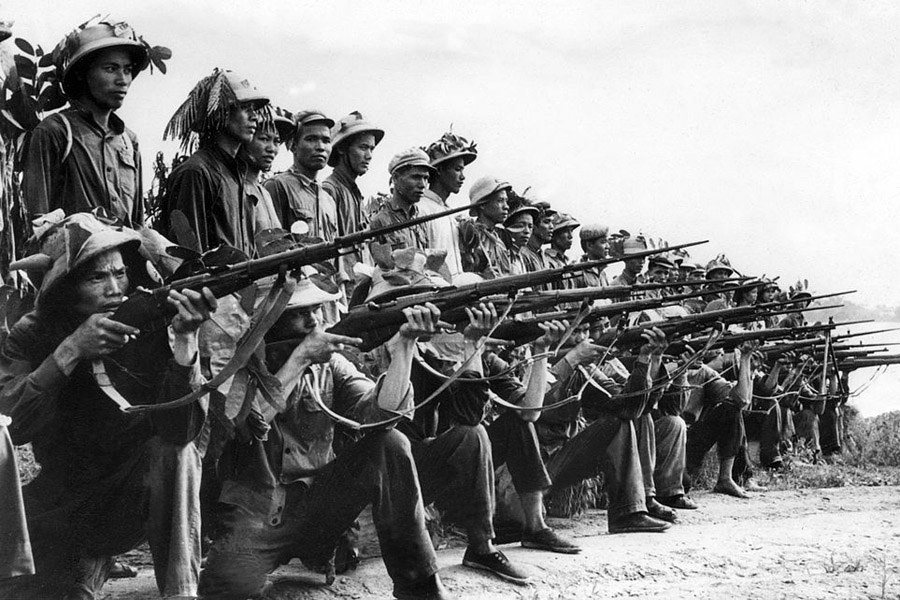
1966: North Vietnamese forces ready to fire during a military exercise in Bach Dang, near Hanoi.
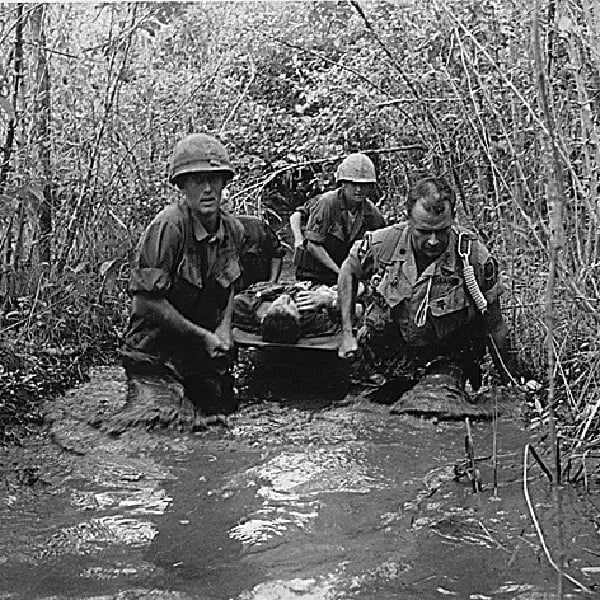
1969: Soldiers carry a wounded comrade through a swampy area.
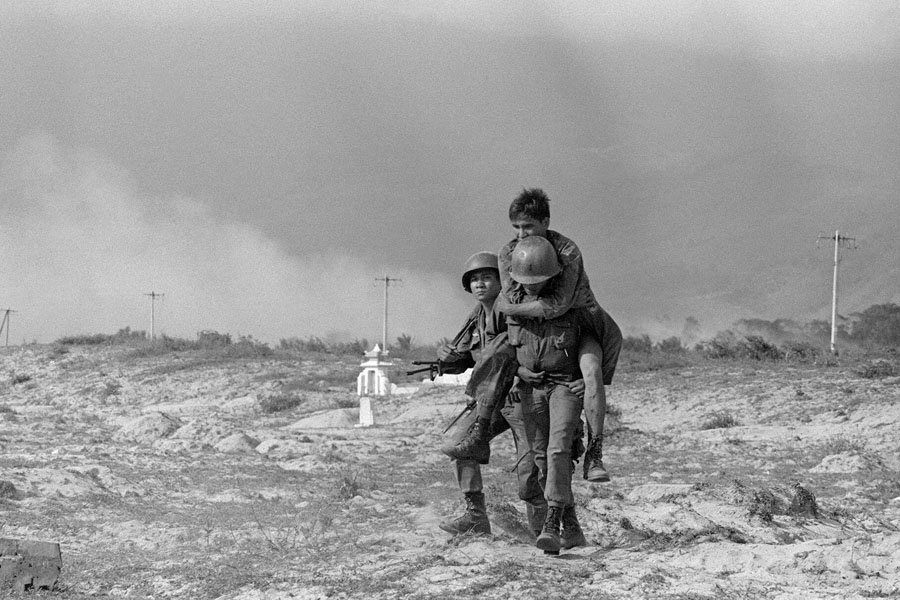
1968: A wounded South Vietnamese soldier is helped by his comrades in the destroyed cemetery of Da Nang, during an attack.